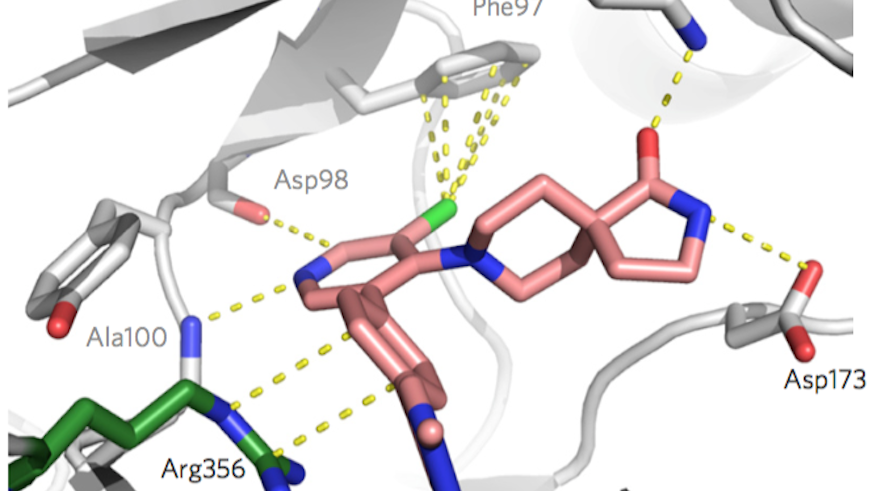New insights into potential cancer therapies
26 January 2016

A 6 year collaboration between Cardiff University, The Institute of Cancer Research and the pharmaceutical company Merck Serono has identified a compound which can be used to study the function of the protein kinases CDK8 and CDK19 in diseases including breast and colon cancer.
The collaborative project was focused specifically on the Wnt signalling pathway. The Wnt pathway plays a key role in tissue regeneration in adults, but is also known for its role in the initiation of cancers. For many years, scientists have been involved in research looking into how this pathway can be ‘switched off’. And this study is an important step in this direction.
Led by Professor Trevor Dale of Cardiff University School of Biosciences, Julian Blagg at The Institute of Cancer Research and Dirk Wienke of Merck Serono, the study was initially set up in 2008 to look for compounds that could act as inhibitors to the Wnt pathway.
Using the latest robotic technology, the research team tested thousands of compounds, and were successful in identifying one that was able to turn off the pathway – CCT251545. The team then discovered that this particular compound binds to the protein kinases CDK8 and CDK19, which are amplified in many instances of breast and colon cancer.
The discovery of this compound has enabled researchers to ask specific questions about these two kinases. As well as assisting the exploration of the role of CDK8 and CDK19 in human disease, it also helps scientists to determine if the kinases could be targets for treatment of several types of cancer.
While this is undoubtedly a significant piece of research, a lot more work needs to be done before it can be determined if CCT251545 is a viable cancer therapy.
Professor Dale said ‘Amongst the scientific community, there is a huge amount of interest in protein kinases in terms of modifying treatments for specific diseases, such as cancer. This particular discovery came about as a result of partnership working between academics and the pharmaceutical industry, with over 40 well-respected scientists taking part. It is an important and high-quality piece of research, and is a great example of what a robust, focused academic-industrial collaboration can achieve.’